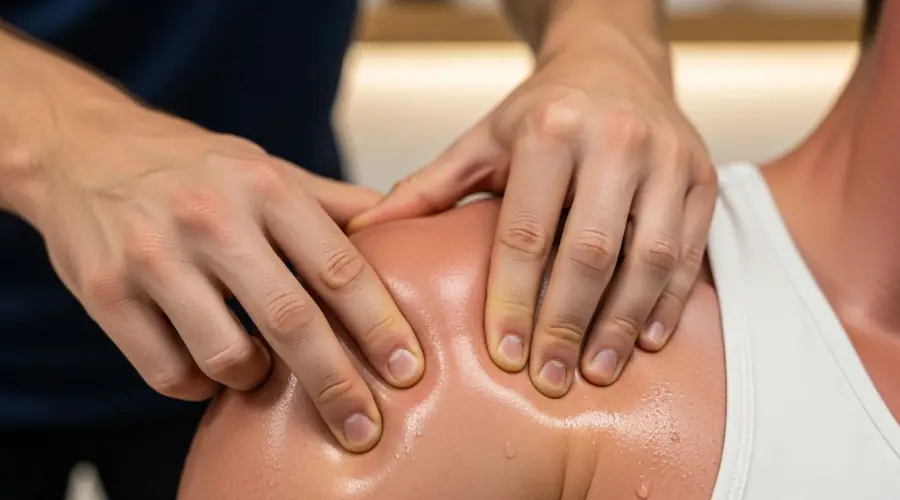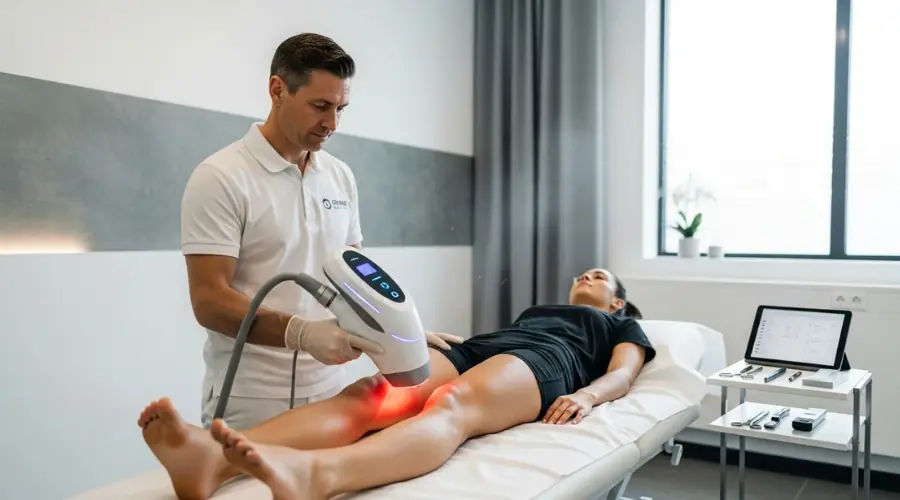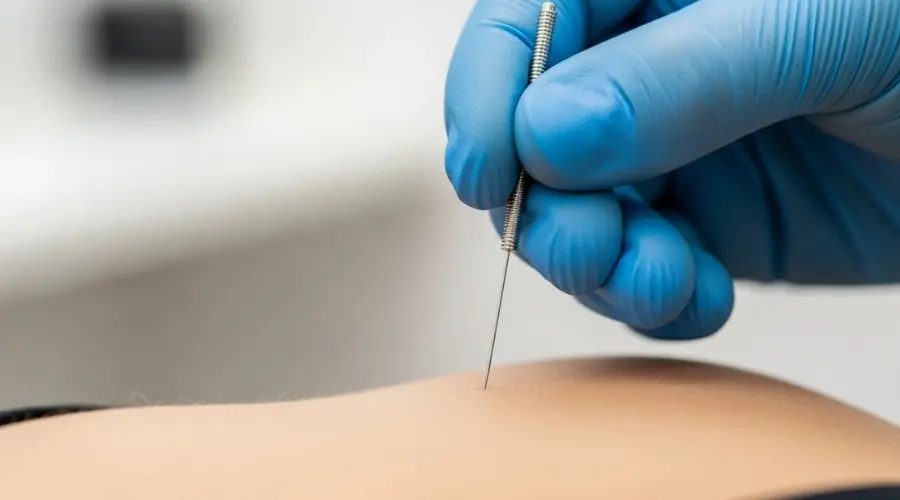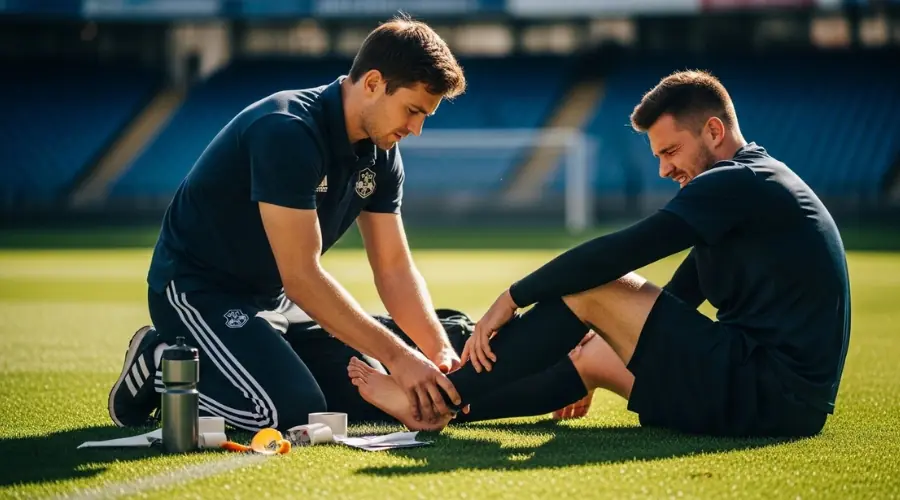Exercise is fantastic! Whether you're strolling along Jumeirah Beach, lifting weights in one of Dubai's modern gyms, or preparing for a football match, physical activity revitalizes your mind and body. But sometimes, a moment of carelessness or excessive strain can lead to an injury, keeping you away from what you love. This is where a key specialist steps in: the sports physiotherapist.
If you've ever wondered what these professionals do and how they can help you, this article is for you. We will explain in detail who sports physiotherapists are and why they are a vital asset for any active individual, from beginners to professional athletes.
How Do Sports Physiotherapists Differ from General Physiotherapists?
You might think a physiotherapist is a physiotherapist, but that's not the case. While a general physiotherapist helps people return to their daily lives after surgery or a general injury, sports physiotherapists go a step further. They are specialists with a deep understanding of the specific demands on an athlete's body.
A sports physiotherapist knows that the stress on a runner's knee is different from that on a basketball player's knee. They are thoroughly familiar with the anatomy and biomechanics of sports movements, and their goal isn't just to eliminate pain. The primary objective is to return you to your previous level of performance (and even higher) safely and sustainably.
At the brehabdxb clinic, our team consists of sports physiotherapists who have worked with athletes from various disciplines and know exactly what you need to get back to the sport you love.
The Key Role of Sports Physiotherapists in Your Health Journey
The work of a sports physiotherapist extends far beyond massaging a sore muscle. They are by your side through every stage, from prevention to treatment and performance enhancement.
Injury Prevention: The best treatment is prevention! By conducting a thorough assessment of your body, sports physiotherapists identify weaknesses, muscular imbalances, and faulty movement patterns. They then provide corrective and strengthening exercises to make your body more resilient to potential injuries. It’s like insuring your body against sports-related incidents.
Fast and Accurate Diagnosis: When you get injured, time is of the essence. A correct and swift diagnosis can dramatically speed up your recovery process. Sports physiotherapists are highly skilled in diagnosing musculoskeletal injuries and can quickly pinpoint the source of your pain to develop the best treatment plan.
Specialized Treatment and Rehabilitation: This is where the magic of sports physiotherapy happens. They use a range of advanced techniques to reduce pain, control inflammation, and accelerate the healing process of damaged tissues.
Safe Return to Sport: One of the biggest mistakes athletes make is rushing back to training. This often leads to re-injury, which can be more severe. Through precise functional assessments, sports physiotherapists tell you when your body is truly ready to return, managing the process in a controlled, step-by-step manner.
Advanced Sports Physiotherapy Techniques: Architecting a Powerful Return to the Field
For an athlete, nothing is more frustrating than an injury that keeps them away from competition. On this challenging journey, the sports physiotherapist acts as a key expert, taking on the role of an architect who rebuilds and strengthens the athlete's body. Relying on their deep knowledge of physiology and biomechanics, these specialists use a set of professional and scientific techniques to accelerate recovery, reduce pain, and restore the athlete to peak performance.
Let's take a closer look at the advanced tools in a sports physiotherapist's toolbox.
1. Manual and Movement Techniques

These methods form the core of physiotherapy and are applied directly to the athlete's body.
Therapeutic Exercise: These aren't simple workouts; they are precise, personalized programs designed with specific goals:
Increasing Range of Motion: Restoring full movement to injured joints.
Strengthening Muscles: Rebuilding muscle strength lost during the recovery period.
Improving Neuromuscular Control: Retraining the brain and muscles to coordinate and function correctly.
Manual Therapy: These techniques include therapeutic massage, Myofascial Release, and relaxation methods. Using their hands, the physiotherapist:
Releases muscle tension and trigger points.
Increases blood circulation in damaged tissues.
Breaks down tissue adhesions that cause movement restrictions.
Taping: The use of special tapes (like Kinesiology tape) to support joints and muscles, reduce swelling, and improve muscle function without restricting movement.
2. The Power of Technology: Using Advanced Modalities

Physiotherapists use various physical energies to penetrate deep tissues and accelerate the body's natural healing processes.
Electrotherapy: The use of controlled electrical currents to reduce pain (by blocking pain signals to the brain) and re-educate muscles (by creating gentle contractions).
Ultrasound Therapy: High-frequency sound waves penetrate deep tissues, creating gentle heat that increases blood flow and aids cellular repair.
Laser Therapy: The use of focused light waves (high and low power) that act at the cellular level to reduce inflammation and significantly speed up the tissue repair process.
Diathermy: Generates deep heat in tissues using shortwave electromagnetic currents, which is highly effective for chronic pain and reducing joint stiffness.
Magnetic Field Therapy: Utilizes magnetic fields to improve the body's healing processes and reduce inflammation.
3. Specialized Treatment Methods

For more complex conditions, physiotherapists employ special techniques.
Dry Needling: This technique is different from acupuncture. A very thin needle is inserted into trigger points or muscular knots to release deep muscle tension and reduce pain.
Traction: The use of mechanical or manual pulling forces, especially for the spine, to relieve pressure on discs and nerves, thereby improving conditions like sciatica.
The Role of a Physiotherapist in a Professional Sports Team

As mentioned, the presence of a sports physiotherapist on professional teams at major events like the Olympics and the World Cup is essential. They are not just a therapist but the connecting link of the medical team. With a complete understanding of the athletes' physical condition, the physiotherapist is in constant communication with the sports physician, orthopedic specialist, coach, and nutritionist to develop the best recovery and injury prevention plan.
They also contribute to the psychological aspect of recovery by providing positive verbal and visual feedback and building trust, ensuring the athlete returns to the field with full physical and mental readiness.
Why Do Athletes in Dubai Need Sports Physiotherapists?
Dubai is a city full of sporting opportunities, from international competitions to state-of-the-art gyms and great outdoor spaces for activities. This active lifestyle also demands specialized care.
At brehabdxb clinic, we have helped hundreds of athletes and active individuals in Dubai overcome their injuries. We know you don't want to be away from your training for long. That's why our approach is entirely active and goal-oriented. We don't just look at the site of the pain; we consider your entire body as an integrated system to find and fix the root cause of the problem.
When Should You See Our Sports Physiotherapists?
If you experience any of the following, it's time to consult a specialist:
- Sudden or chronic pain during or after exercise.
- Muscle strains or joint sprains.
- Reduced range of motion (e.g., you can't fully move your shoulder or knee).
- A feeling of weakness, instability, or "giving way" in a joint.
- Persistent swelling, bruising, or inflammation.
Even if you're not injured but want to take your athletic performance to the next level and prevent future injuries.
Don't Let an Injury Stop You!
Pain and injury are part of the athletic journey, but they shouldn't be the end of it. With the help of expert sports physiotherapists, you can turn this challenge into an opportunity to understand your body better, strengthen your weaknesses, and make a smarter comeback.
Are you ready to take the first step towards recovery? Contact us at brehabdxb today and book a consultation. We are waiting to help you achieve your athletic goals!



